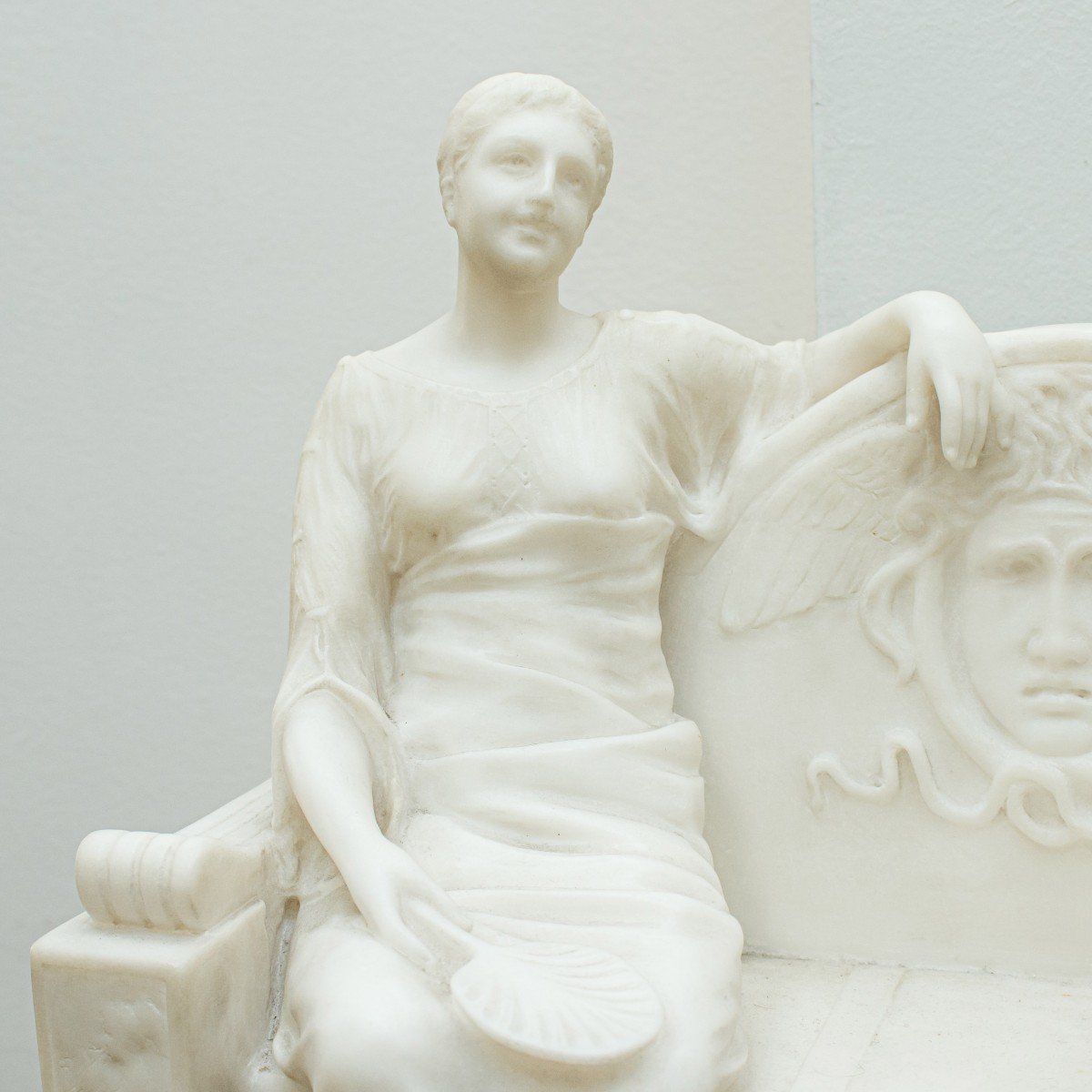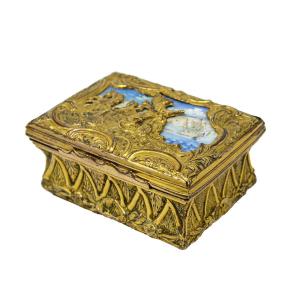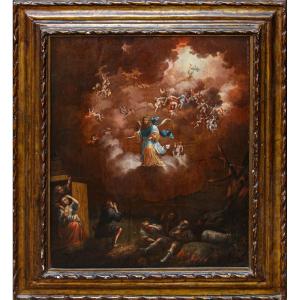Gallant scene with citadel
White marble and green marble from the Alps, cm 59 x 48 x 29
Signed on the back "G. Abell"
The refined marble group describes the episode in which a citadel happily intones a singing step, accompanied by the lyre. The ecstatic expression of the young woman sitting before him, equipped with an elegant fan, contrasts with the melancholy face carved on the elaborate seat occupied by the couple, in which Medusa is recognizable, not at all by chance.
Gorgon sister of Stenus and Eurialis, originally inhabitant at the edge of the night, Medusa was a monstrous being with its head covered with snakes. The power to petrify whoever had met her gaze, conferred on her by the prodigious crown, did not cease even when the hero Perseus took off, making a gift of the head to Athena, who affixed it to his shield. To the displeasure of his departure, the sisters Steno and Euriale sang a lament so tragic that Athena memorized the notes to compose a melody to give to men. From this melody was born the music, used in the present marble by the citadel to enchant the young woman.
If the relief with the head of Medusa, loaded with the moving expressiveness typical of late Hellenism, is the figurative outcome of the contamination between the sculptural representations of the Roman oracles, the iconography of the same Medusa and the masks of the ancient Greek and Roman theaters, the cheerful plasticism of the singer and the woman is affected instead by the full modern climate to which the whole group is attributable. The signature on the back of the marble, "G. Abell", reveals in fact that the marble is the work of this French sculptor, active above all between the twenties and thirties of the last century, expert in the processing of bronze and chryselephantine sculptures, as evidenced by some examples appeared on the market.

















































 Le Magazine de PROANTIC
Le Magazine de PROANTIC TRÉSORS Magazine
TRÉSORS Magazine Rivista Artiquariato
Rivista Artiquariato